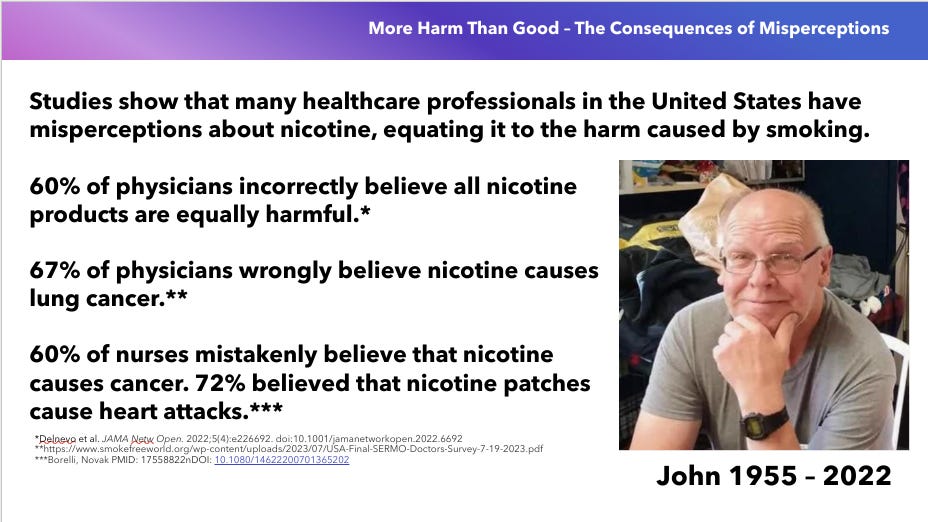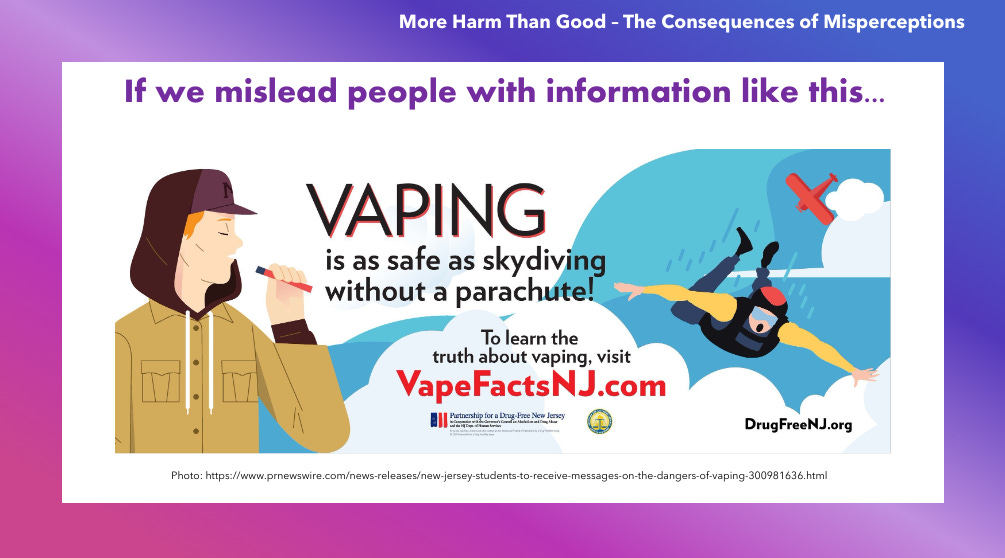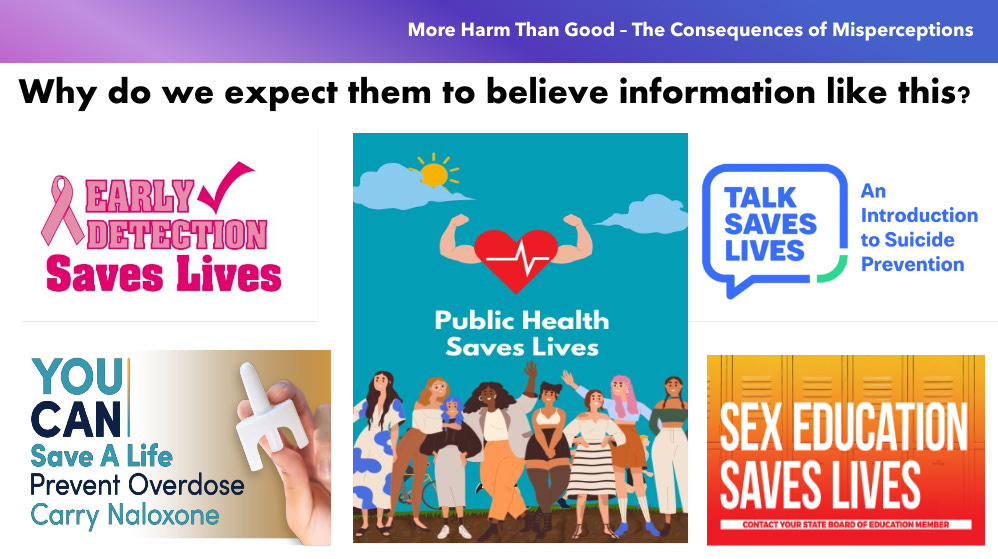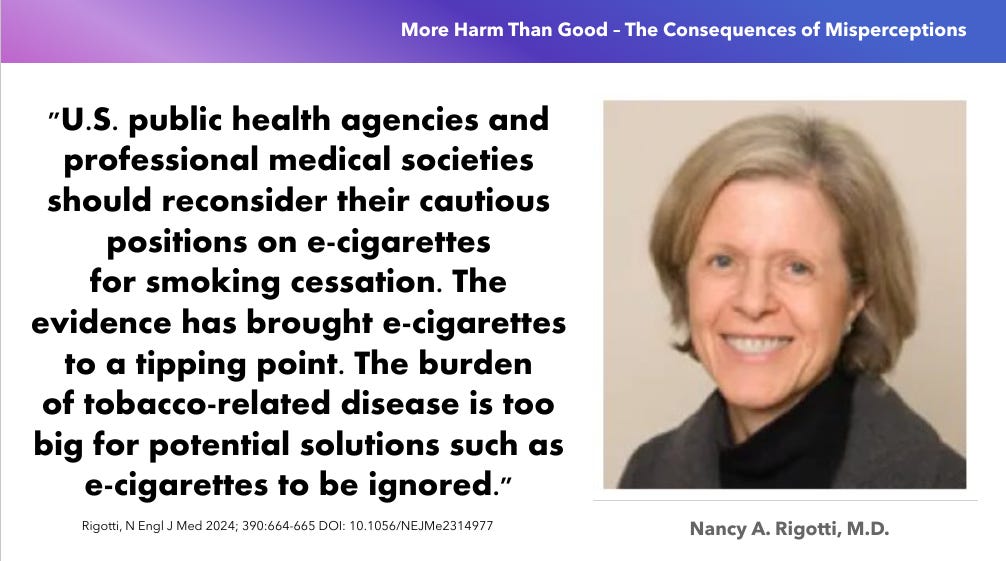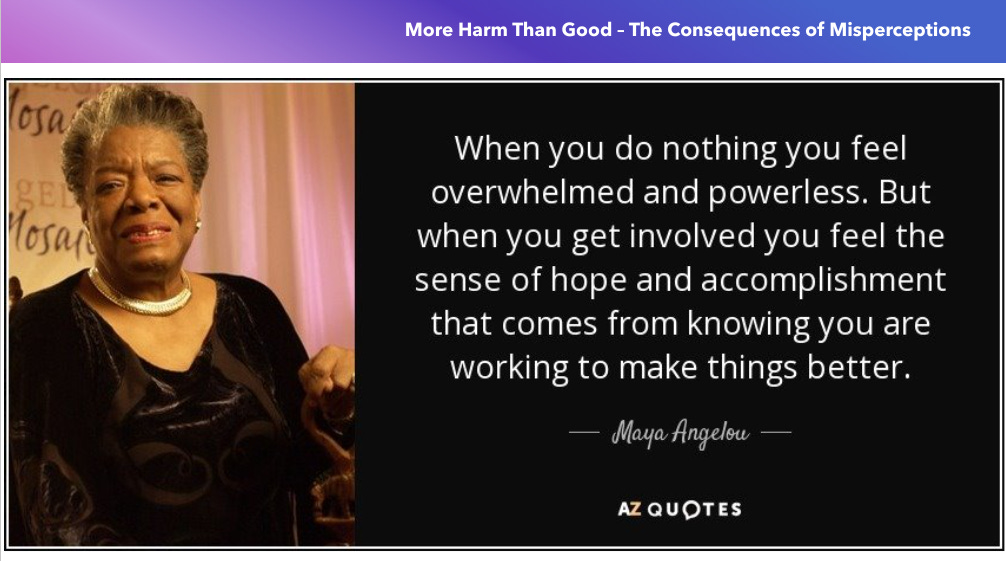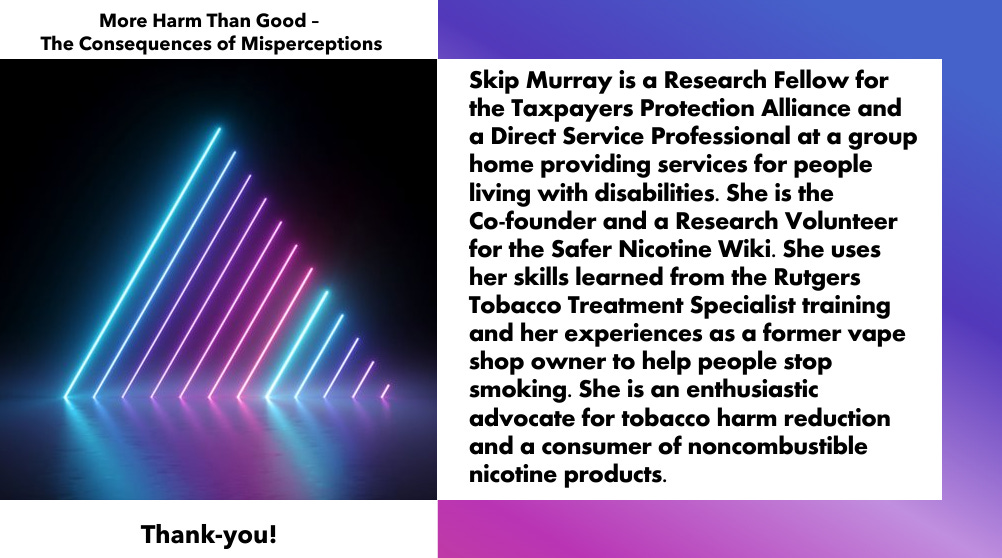2024 - More Harm Than Good
The Consequences of Misperceptions
Panel: Women's Health Equity: Reducing the Stigma of Tobacco Harm Reduction, Washington, DC
The following day, Filter published my op-ed: It’s Critically Important to Tell Women the Truth About Nicotine.
Good afternoon! Thank you for the opportunity to share my thoughts on how misperceptions about tobacco harm reduction hurt people. There are several noncombustible options that consumers may use instead of smoking tobacco. Those options dramatically reduce the risk of smoking-related diseases and death. Examples include nicotine patches, nicotine gum and lozenges, nicotine pouches, snus, heat-not-burn devices, and e-cigarettes. Using an e-cigarette is commonly called “vaping.” While several things can be “vaped,” I will be referring to vaping nicotine in our conversation today.
I have changed the names of people in the stories I’m about to share to protect their privacy.
We all know that smoking tobacco is detrimental to health. Due to misperceptions about nicotine and non-combustible products, most people don’t know the truth about the harm reduction options for people who smoke. Instead, they believe that these options are as harmful or more harmful than smoking. Many sources lead to these misperceptions, including inaccurate articles in the media and anti-nicotine messaging from public health groups.
One has to wonder what we could do better to help more women and their loved ones stop smoking. The logical advice is to have them talk to their healthcare provider. But only 53% of women feel they can trust their healthcare providers. That lack of trust is warranted when it comes to seeking information about nicotine.
Women are the “chief medical officers” of their households, making 94% of the health-related decisions for themselves and their household members. 59% of women are also the primary or joint health-related decision-makers for people outside their homes. It is, therefore, imperative that women have accurate information on health-related issues.
My husband and his best friend, John, started smoking when they were teens. My husband quit smoking after he was diagnosed with COPD. John continued to smoke and was diagnosed with lung cancer. John’s wife, Sherry, was at his side for every treatment and took care of John, their family, and their household while John fought cancer. John won his battle, but to the dismay of his doctor, he wasn’t able to quit smoking. I told John about vaping. I offered to supply him with a device and the liquids. I promised I’d make the 2-hour drive to their home, show him how to use the equipment, and answer any questions.
John and Sherry talked it over with his doctor, and his doctor told him that vaping was just as harmful as smoking. When John wanted to believe me and try vaping, Sherry begged him not to. Two years later, John was sitting on the couch, a cup of coffee in one hand and a cigarette in the other. He was complaining to Sherry about the weather when he suddenly collapsed. Sherry attempted to perform CPR while calling for help. By the time the medics arrived, John was gone. He had a heart attack. It was heartbreaking to talk to Sherry on the phone as she sobbed and wished she hadn’t talked John out of trying vaping to quit smoking.
Misperceptions about non-combustible products can cause unnecessary stress for our loved ones and lead them to question whom they can trust. Ten years ago, my 5-year-old granddaughter watched her Dad curled up on the bathroom floor while he clutched his chest. He was having a heart attack. She and I were afraid we were going to lose him. I held her in my arms as she cried. I will never forget her waving at the helicopter he was in and saying, “Goodbye, Daddy. I love you. Please don’t die. Please come home.”
The good news is he survived. And two weeks later, he used vapor products to quit smoking. Today, he doesn’t smoke or vape, but he quit smoking too late and will be on heart medications for the rest of his life.
It was a pleasant surprise when my granddaughter called me to wish me a Happy Valentine’s Day. I wonder if memories of her dad on the bathroom floor ten years ago were filling her with fear as she told me what she learned about vaping in school. I could hear her fighting back the tears. She said she learned that vaping can give you cancer or cause you to have a heart attack. It will damage your brain and cause you to develop popcorn lung. She is worried that these things will happen to me and thinks I should stop vaping.
I asked if she had learned about smoking, and she said no. So I asked her why she thought they didn’t learn about smoking, and she said, “Because vaping is worse.” I struggled to know what to say to her. How do I explain that what she was told isn’t correct without destroying her trust in other vital topics she will learn about in school?
Women who don’t smoke still suffer the consequences of smoking. Every day, women are left behind to grieve the losses of their children, life partners, parents, and best friends who smoked. Like an autistic woman who lives at the group home I’m employed at. Annie’s mom wasn’t able to quit smoking. She wouldn’t try alternatives to smoking because she believed the misperception that they are as harmful as smoking. She died from lung cancer last year. Annie is unable to comprehend death. It breaks my heart when she asks me, “Where’s Mom?” and all I can tell her is, “Mom’s gone.”
It is the smoke from smoking that is hazardous, not the nicotine. Quitting smoking is hard. Some women discover noncombustible products and use them to quit smoking. Yet remain stigmatized just as they were when they smoked. Those who are vaping instead of smoking have been told there’s no difference, so they didn’t quit smoking. Their achievement is discredited and tossed in the trash.
Tragically, women in this country continue to die prematurely, not only because they smoked but because they weren’t told the truth about safer alternatives. We can and MUST do a better job of educating the public, healthcare providers, media, and lawmakers about the differences between smoking and other sources of nicotine. Everyone in this room has the power to be the catalyst for that change. It is time to speak up for the truth.
Notes:
My blog is a personal project. It is not affiliated with any current or past employers or groups with which I volunteer. I receive no financial compensation for my efforts to create this content. Thank you to those who have offered to fund this project and compensate me for my time and effort. This is my gift to those interested in nicotine. Community service is important to me. Volunteering is something I have done since I was a child.
My blog, Skip's Corner, has an X/Twitter account.
My personal accounts are on BlueSky, LinkedIn, and X (Twitter).






